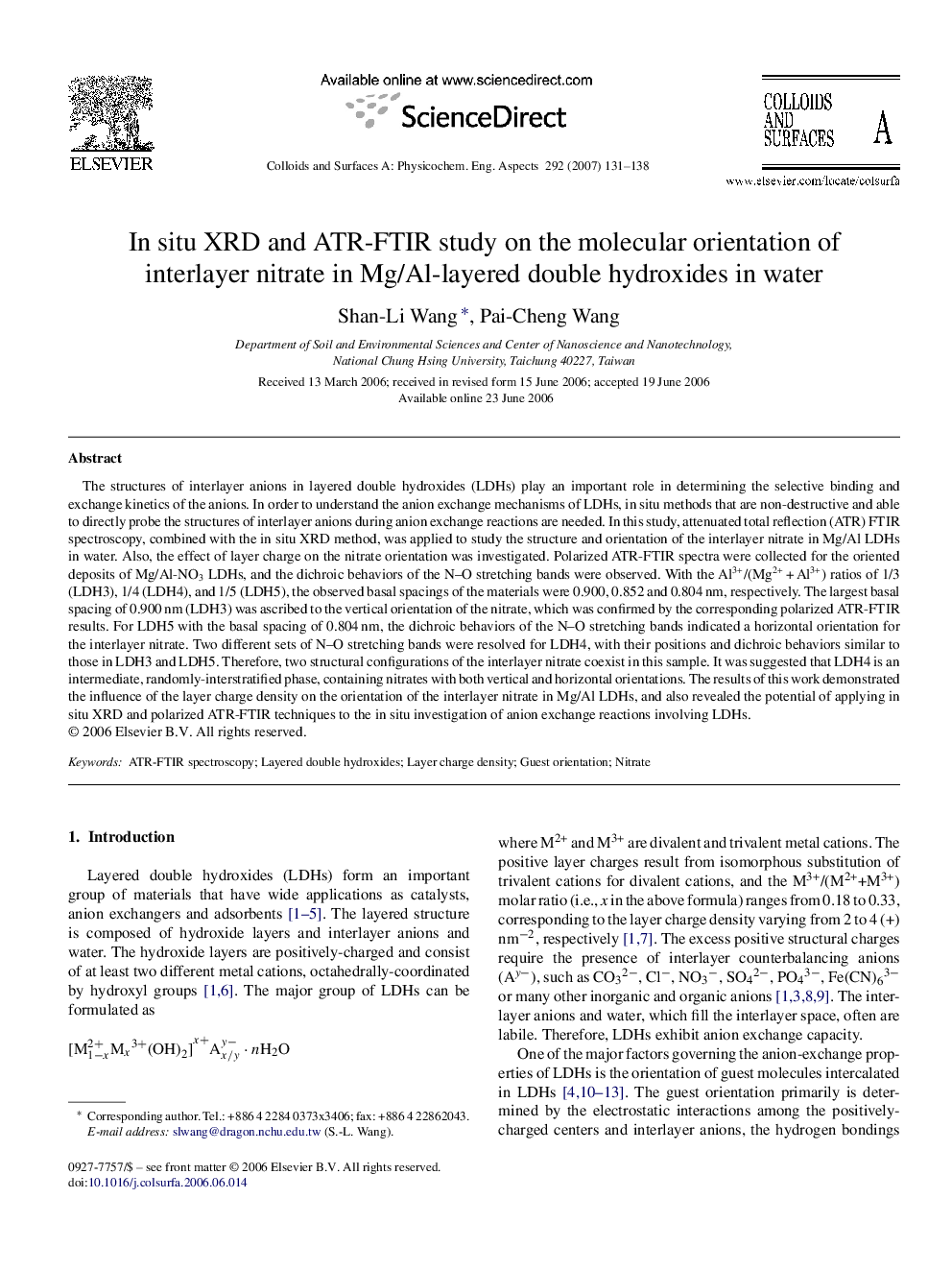| Article ID | Journal | Published Year | Pages | File Type |
|---|---|---|---|---|
| 598021 | Colloids and Surfaces A: Physicochemical and Engineering Aspects | 2007 | 8 Pages |
The structures of interlayer anions in layered double hydroxides (LDHs) play an important role in determining the selective binding and exchange kinetics of the anions. In order to understand the anion exchange mechanisms of LDHs, in situ methods that are non-destructive and able to directly probe the structures of interlayer anions during anion exchange reactions are needed. In this study, attenuated total reflection (ATR) FTIR spectroscopy, combined with the in situ XRD method, was applied to study the structure and orientation of the interlayer nitrate in Mg/Al LDHs in water. Also, the effect of layer charge on the nitrate orientation was investigated. Polarized ATR-FTIR spectra were collected for the oriented deposits of Mg/Al-NO3 LDHs, and the dichroic behaviors of the N–O stretching bands were observed. With the Al3+/(Mg2+ + Al3+) ratios of 1/3 (LDH3), 1/4 (LDH4), and 1/5 (LDH5), the observed basal spacings of the materials were 0.900, 0.852 and 0.804 nm, respectively. The largest basal spacing of 0.900 nm (LDH3) was ascribed to the vertical orientation of the nitrate, which was confirmed by the corresponding polarized ATR-FTIR results. For LDH5 with the basal spacing of 0.804 nm, the dichroic behaviors of the N–O stretching bands indicated a horizontal orientation for the interlayer nitrate. Two different sets of N–O stretching bands were resolved for LDH4, with their positions and dichroic behaviors similar to those in LDH3 and LDH5. Therefore, two structural configurations of the interlayer nitrate coexist in this sample. It was suggested that LDH4 is an intermediate, randomly-interstratified phase, containing nitrates with both vertical and horizontal orientations. The results of this work demonstrated the influence of the layer charge density on the orientation of the interlayer nitrate in Mg/Al LDHs, and also revealed the potential of applying in situ XRD and polarized ATR-FTIR techniques to the in situ investigation of anion exchange reactions involving LDHs.
